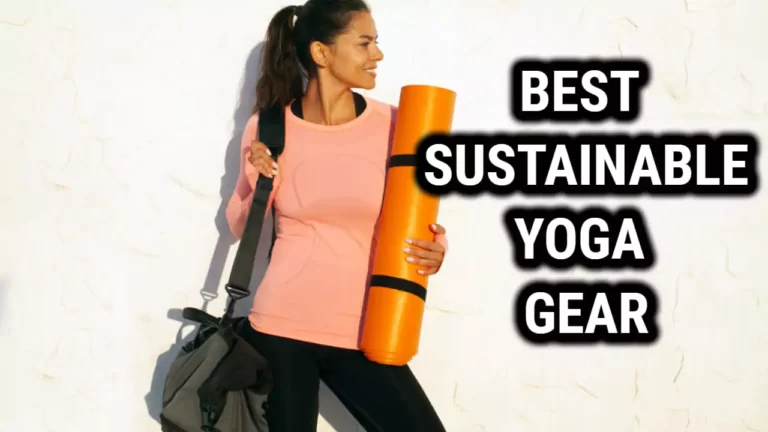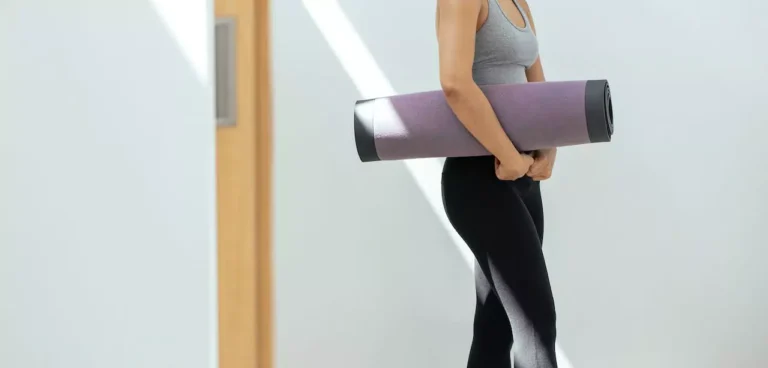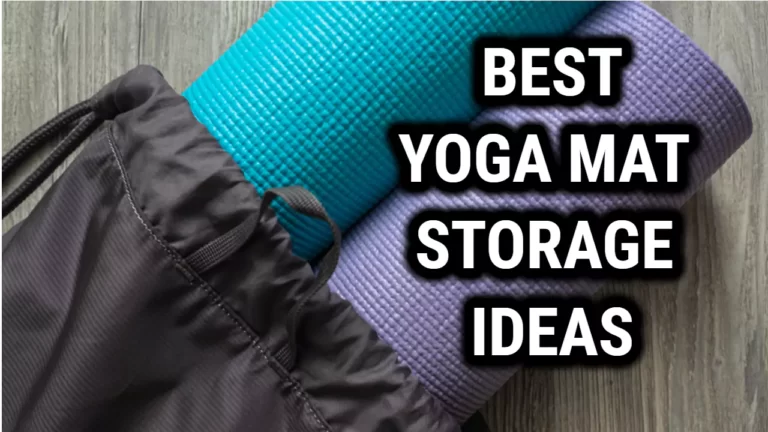Different Types Of Yoga Mat Texture

Are you looking for the perfect yoga mat? With all of the different types of mats on the market, it can be difficult to know which one is right for you.
There is a lot more to consider than just the color or brand—the texture of the mat plays an important role in your practice. Here will explore the different types of yoga mat textures and how they each affect your experience.
Yoga mats come in a variety of shapes and sizes, but their textures are often overlooked when making a purchase. From ultra-smooth to extra-tacky, each type has its own unique benefits and drawbacks that can make or break your yoga session.
Knowing what type of texture suits you best can help make sure every practice is comfortable and enjoyable.
No matter if you’re a beginner or an experienced yogi, choosing the right texture for your mat is essential. Let’s explore the different types available so you can find the perfect match for your practice!
Properties Of Mat Materials
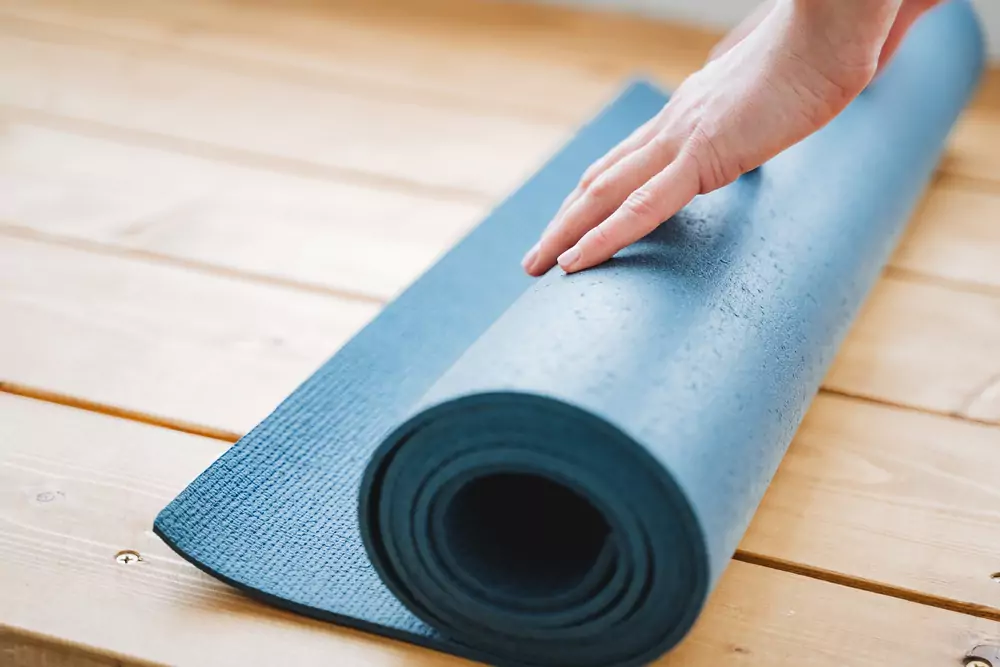
The journey to find the perfect yoga mat is often like a choose-your-own adventure story. Every yogi must decide which type of mat material they prefer based on their own needs and preferences.
Natural rubber, cotton, and foam are some of the most popular materials used in yoga mats. Each mat texture has its own unique properties that can benefit a yogi’s practice.
A natural rubber mat is a great choice for those who want superior grip and cushioning. It is made from tree sap and offers an eco-friendly option for yogis looking for a more sustainable alternative.
Natural rubber mats also tend to be thicker than other types of yoga mats, making them ideal for those who need extra padding during their practice. Rubber mats are also quite durable and can last longer than cotton or foam mats if taken care of properly.
Different Type of Yoga Mats and Texture

1. Cork Yoga Mat: Cork is a natural, sustainable yoga mat material that offers a unique combination of grip and cushion. It’s ideal for sweaty practice as it absorbs moisture and provides a non-slip surface.
2. Natural Rubber Yoga Mat: Natural rubber yoga mats are made from rubber tree sap and are highly durable. They provide superior cushioning and grip, making them a great choice for restorative yoga.
3. Polyurethane Yoga Mat: Polyurethane yoga mats are lightweight and provide good grip. They are made from a synthetic material, which makes them easy to clean and maintain.
4. Jute: Jute yoga mats are made from a natural fiber and are a great choice for those looking for a more eco-friendly option. They provide a textured surface with good grip and cushion.
5. PVC: PVC yoga mats are made from a synthetic material and provide good grip and cushion. They are often less expensive than other yoga mats and are easy to clean.
6. Cotton: Cotton yoga mats are often more affordable than other materials and are highly absorbent and breathable. The material is comfortable and provides good grip and cushion. The downside is that they don’t last as long as other materials. They may also slide around more during practice. As with any yoga mat, proper care and cleaning is important to ensure the longevity of the mat.
7. Bamboo Yoga mats: Bamboo mats are made from a natural material and provide a great combination of grip and cushion. They are durable and eco-friendly, making them a great choice for those looking for a sustainable option.
Also Read: How to Choose The Perfect Yoga Mat Thickness
Benefits Of Mat Texture
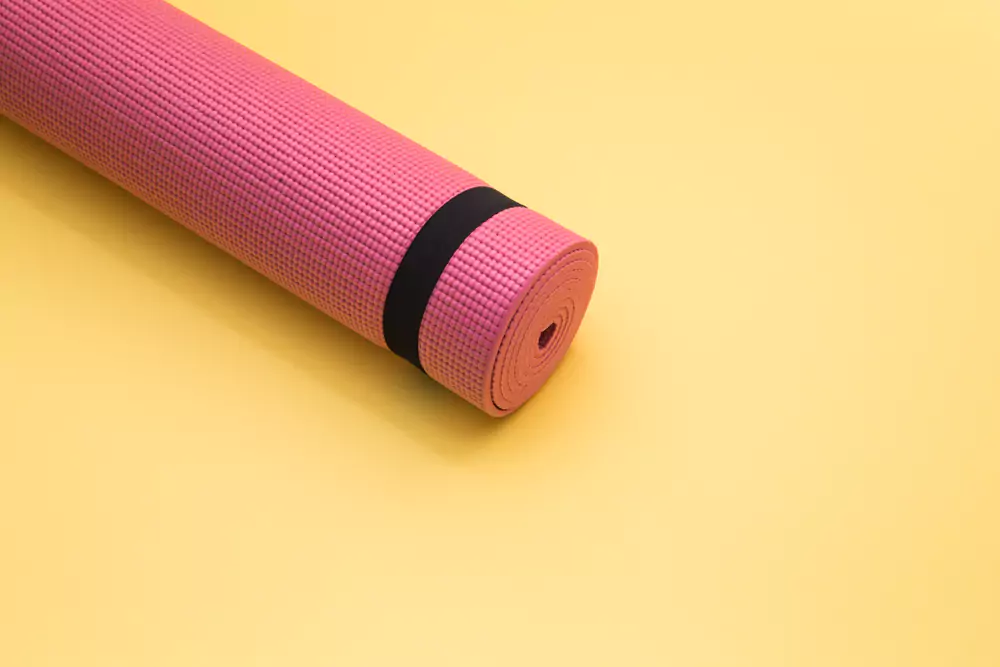
When it comes to yoga mats, texture is a key factor in the overall user experience. There are several types of yoga mat textures available, each offering its own unique benefits.
When considering the type of mat texture you should use, it’s important to take into account the type of yoga you are practicing as well as your personal preferences. The following are some of the most popular mat textures:
- Waffle-patterned mats provide extra grip and stability during poses like downward dog or plank pose.
- Cork mats offer an earthy texture that provides traction and absorbs moisture.
- Rubber mats provide cushioning and support while still allowing for natural movement.
- Textured jute mats have a slightly rougher surface that helps prevent slipping.
No matter what type of yoga mat material or surface you choose, it’s important to find one that is comfortable for your practice. This will help ensure that you can focus on your breath and alignment without worrying about slipping or sliding around on your mat.
Frequently Asked Questions
What Is The Best Mat Texture For Beginners?
When looking for the best yoga mat texture for beginners, look for something that provides cushioning, support, and good grip. Soft, padded mats are ideal for beginners, as they protect against fatigue and provide extra cushioning. Textured surfaces are better for traction and stability, but should be non-slip and not overly abrasive. Make sure to choose a material that won’t absorb too much moisture or odor. Finally, it’s important to find a texture that won’t cause any irritation or discomfort during practice.
How Often Should I Replace My Yoga Mat?
Most yoga mats are designed to last approximately one to two years with regular use. However, if you practice several times per week, you may need to replace your mat more often. Keep an eye out for signs of wear, such as tears, cracks, and fraying, and replace your mat when needed.
Are There Specific Mats For Hot Yoga?
Are there specific mats for hot yoga? Hot yoga is becoming increasingly popular and is known for its intense physical and mental benefits. For this reason, it’s important to be mindful of the type of mat you’re using. Fortunately, manufacturers have recognized the need for mats that are specifically tailored for hot yoga.
When it comes to selecting the right mat for hot yoga practice, there are several important factors to consider. They include:
- Thickness: A thicker mat provides more cushioning and support during your poses, helping you stay comfortable during long sessions.
- Texture: A textured surface helps prevent slipping while increasing traction, which is especially helpful during challenging poses like inversions.
- Material: Different materials offer varying levels of cushioning and durability, so it’s important to find a material that meets your needs.
Choosing the right mat can make all the difference when it comes to your hot yoga practice. It’s important to research different options and find one that suits your individual preferences and needs. The right mat can help provide extra comfort and stability, allowing you to focus on getting the most out of each session.
Will A Thicker Mat Provide More Cushioning?
When it comes to yoga, the right mat is essential for comfort and safety. Thicker mats offer more cushioning than thin ones. They provide a better buffer between you and the floor, and are especially beneficial for poses that require pressure or balance on the hands and feet.
Thin mats are better for portability and space-saving. Ultimately, it’s important to choose the mat that best suits your individual needs and preferences.
Related Read: Manduka Pro lite vs. Lululemon Reversible Mat – Choosing The Best Yoga Mats
Conclusion
there’s no one-size-fits-all when it comes to choosing the best yoga mat texture. Every yogi has different needs and preferences that should be taken into account. It’s all about figuring out what works best for you.
For instance, I started with a sticky mat for my first few classes because I like the extra grip it provides. However, as my practice progressed, I could feel the need for additional cushioning and decided to upgrade to a thicker mat. It gave me just the right amount of cushion without compromising on grip or stability.
No matter which type of yoga mat you choose, make sure to clean it regularly and replace it every 6 months or so. This will ensure that your mat is in top condition and can provide maximum comfort during your practice sessions. By taking these steps, you can get the most out of your yoga experience while finding the perfect texture for you!

